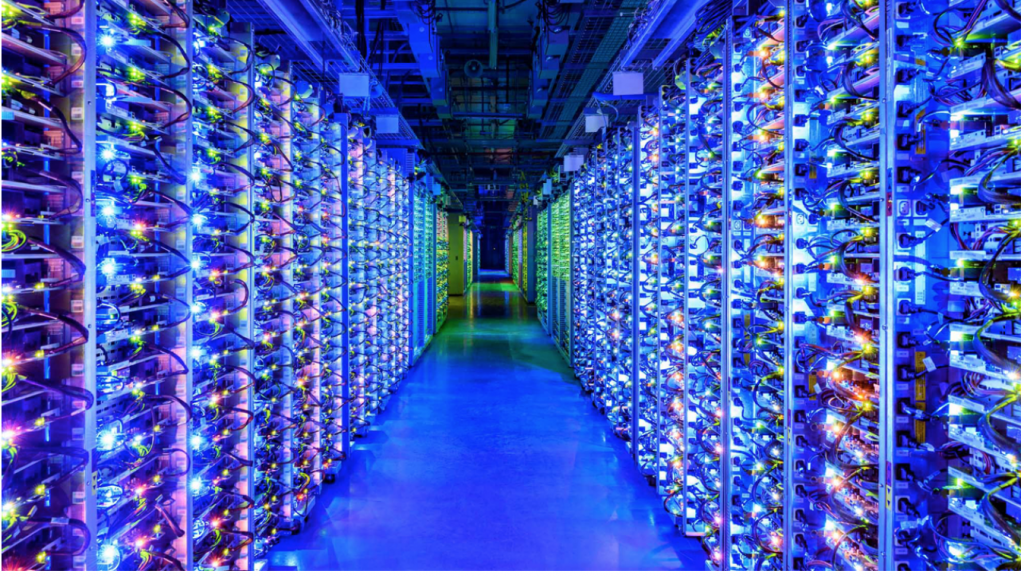
Cloud computing requires massive facilities like this Google data center in Belgium. (Source: Google)
Congress Passes AI Act that Gives Funding, Cloud Access for Researchers
There is exciting news in a pair of articles released this week by sciencemag.org regarding a shift in the U.S. government’s direction that is assisting AI growth in research facilities.
Vanessa Frias-Martinez, a computer scientist at the University of Maryland, College Park, wants to ease the problems of commuters by harnessing two hot trends in computer science, cloud computing and artificial intelligence (AI), which Congress now hopes to scale up dramatically for U.S. scientists. Currently, low-income commuters who rely on public transit deal with multiple transfers, long waits, and off-hour travel, which isn’t measured in ridership surveys.
With support from the National Science Foundation, including CloudBank, which subsidizes access to commercial cloud services, Frias-Martinez plans to track the movements of thousands of Baltimore residents while protecting their privacy. By applying AI algorithms to the large data sets, she hopes to identify ways to eliminate transit bottlenecks and improve service. Frias-Martinez predicts CloudBank “will flatten the steep learning curve” for first-time cloud users like her.
Congress has now embraced a plan to ensure there are many more. The National Artificial Intelligence Initiative Act (NAIIA) of 2020, which became law last week, aims to bolster AI activities at more than a dozen agencies. Its directives include a study of how to create a national research cloud that would build on CloudBank. It also calls for an expansion of a network of research institutes launched last summer, and the creation of a White House AI office and an advisory committee to monitor efforts.
“It’s the closest thing to a national strategy on AI from the United States to be formally endorsed by Congress,” says Tony Samp, a former congressional staffer turned high-tech lobbyist for DLA Piper. He and others say the new law is meant to keep the country at the forefront of global AI research in the face of growing investments by other countries.
The military is also improving AI access. The NAIIA is appended to the National Defense Authorization Act, a 4,500-page bill providing annual policy guidance to the Department of Defense that survived a presidential veto. It gives new authority to use AI to improve combat readiness and fight wars.
The NAIIA both codifies what some federal agencies are already doing with a lengthy to-do list. For example, it endorses NSF’s network of seven AI research institutes, launched last summer with help from the U.S. Department of Agriculture and in partnership with industry, and backs similar centers at DOE and the Department of Commerce—which includes NIST and the National Oceanic and Atmospheric Administration.
The NSF institutes, each funded at roughly $20 million over 5 years, will support research in applying AI to a variety of topics including weather forecasting, sustainable agriculture, drug discovery and cosmology.
A white paper for President-elect Joe Biden, for example, calls for an initial investment of $1 billion, and a 2019 community road map envisions each institute supporting 100 faculty members, 200 AI engineers, and 500 students.
CloudBank Growth Plans
The use of CloudBank and how to expand that service worldwide are explored in a separate story.
As its name suggests, CloudBank is a way for researchers to buy cloud computing resources. But Mike Norman says the National Science Foundation (NSF)-funded pilot project is more than just a bulk retailer; it also offers researchers boutique advice on how to use the cloud.
“The public cloud is like Home Depot; it has everything you need to build whatever you want,” says Norman, a computer scientist who leads CloudBank at the University of California (UC), San Diego. “But not all customers are the same. Senior scientists may already know what they are doing; they have the blueprint, the knowledge, and the tools to build their doghouse. All they need are the [computing] cycles to run their algorithms.”
“In contrast, a new researcher might be starting off with a question and have no idea how to build the platform that will give them the answer,” Norman adds. “They are looking for guidance. And we’re here to help.”
Norman, who is also director of the NSF-funded San Diego Supercomputer Center, says the goal is to provide scientists with needed access. His team spent the first year of their $5 million, 5-year grant awarded in 2019 building a portal that connects NSF-funded scientists with any of four large commercial providers of cloud computing—Amazon Web Services (AWS), Google Cloud, Microsoft Azure, and IBM Cloud.
CloudBank was created to serve NSF grantees, starting with those funded by select CISE programs requesting cloud computing. That’s a small number now, but Norman expects demand to surge once NSF begins to make awards from this year’s program solicitations. CloudBank could also serve as a template for a far larger, national cloud computing resource, part of a massive scale-up in cloud computing and artificial intelligence outlined in the NAIIA law passed by Congress.
As a baseline, 150 NSF grantees asked for money for cloud computing in 2019, including 67 supported by the CISE directorate. That number has doubled over the past 5 years, although it remains small compared with the more than 2,000 awards CISE made that year.
Norman said CloudBank’s system of handling financial transactions can accommodate the projected rapid growth. But keeping it staffed may be more of a challenge. New Ph.D.’s in the field are flocking to the private sector, which offers higher salaries and real-world experience.
With the advent of researchers being better funded and having better access to this CloudBank platform, scientific research will likely be positively impacted by the tremendous growth of AI in 2021.
read more at sciencemag.org







Leave A Comment